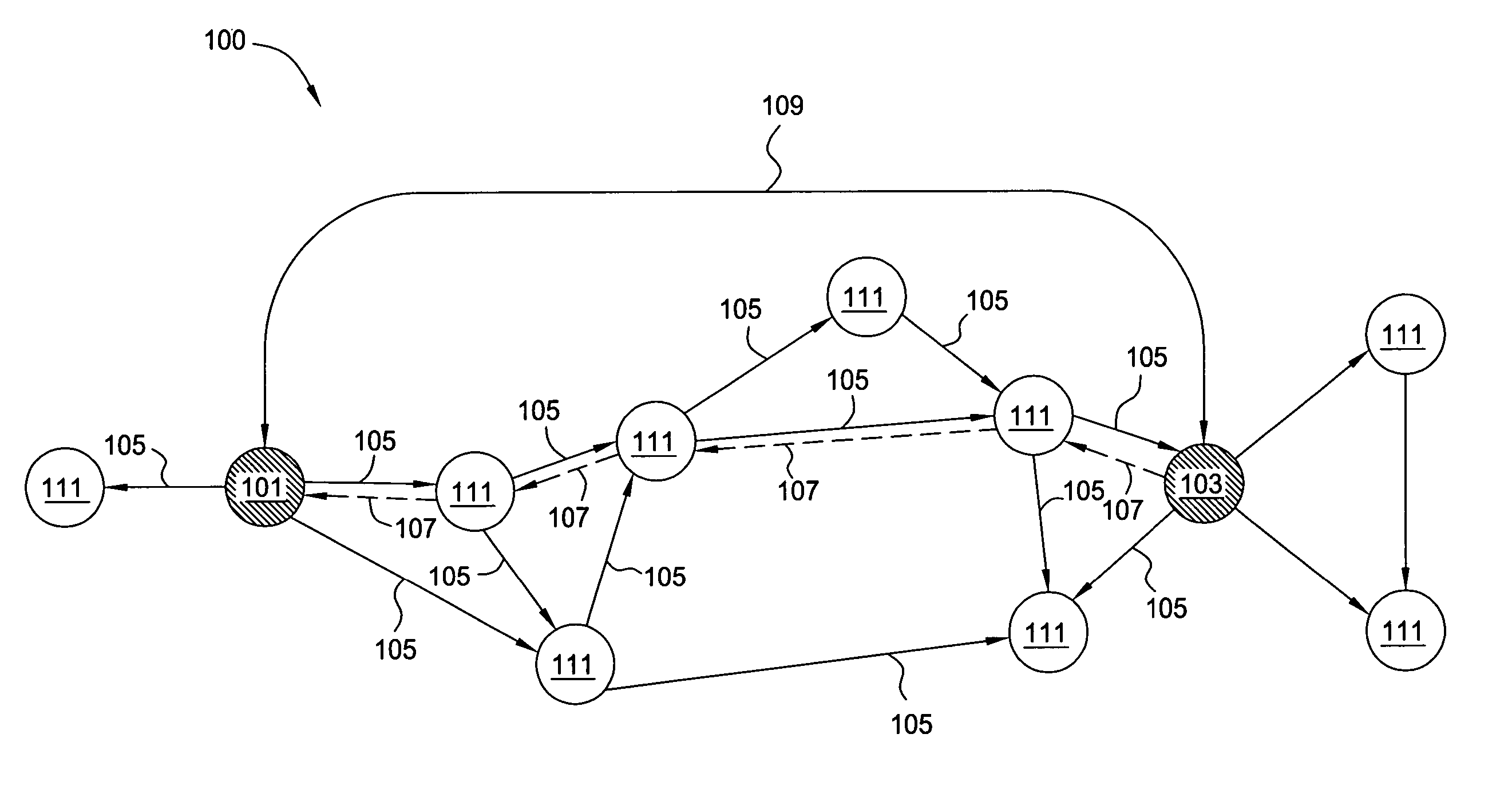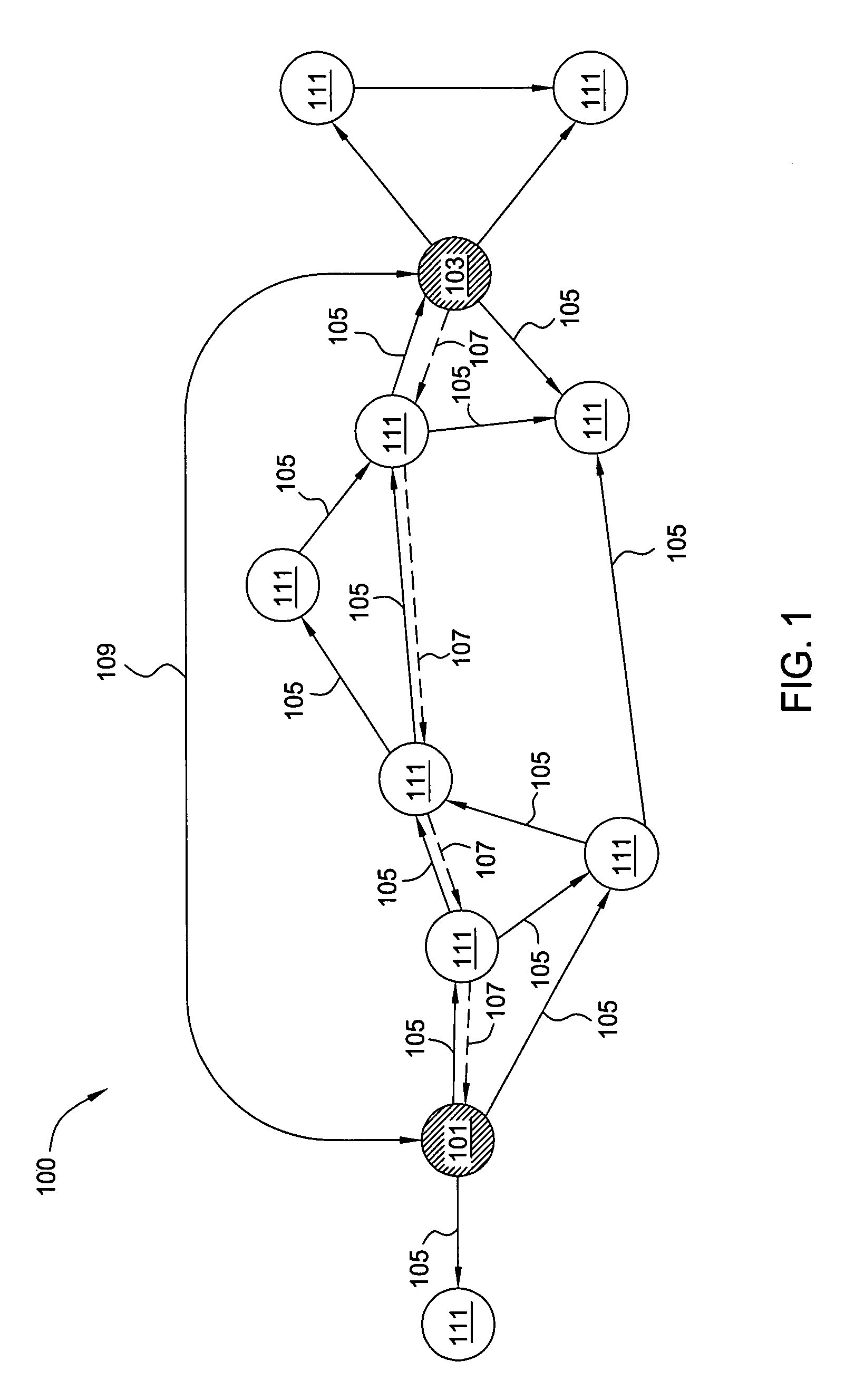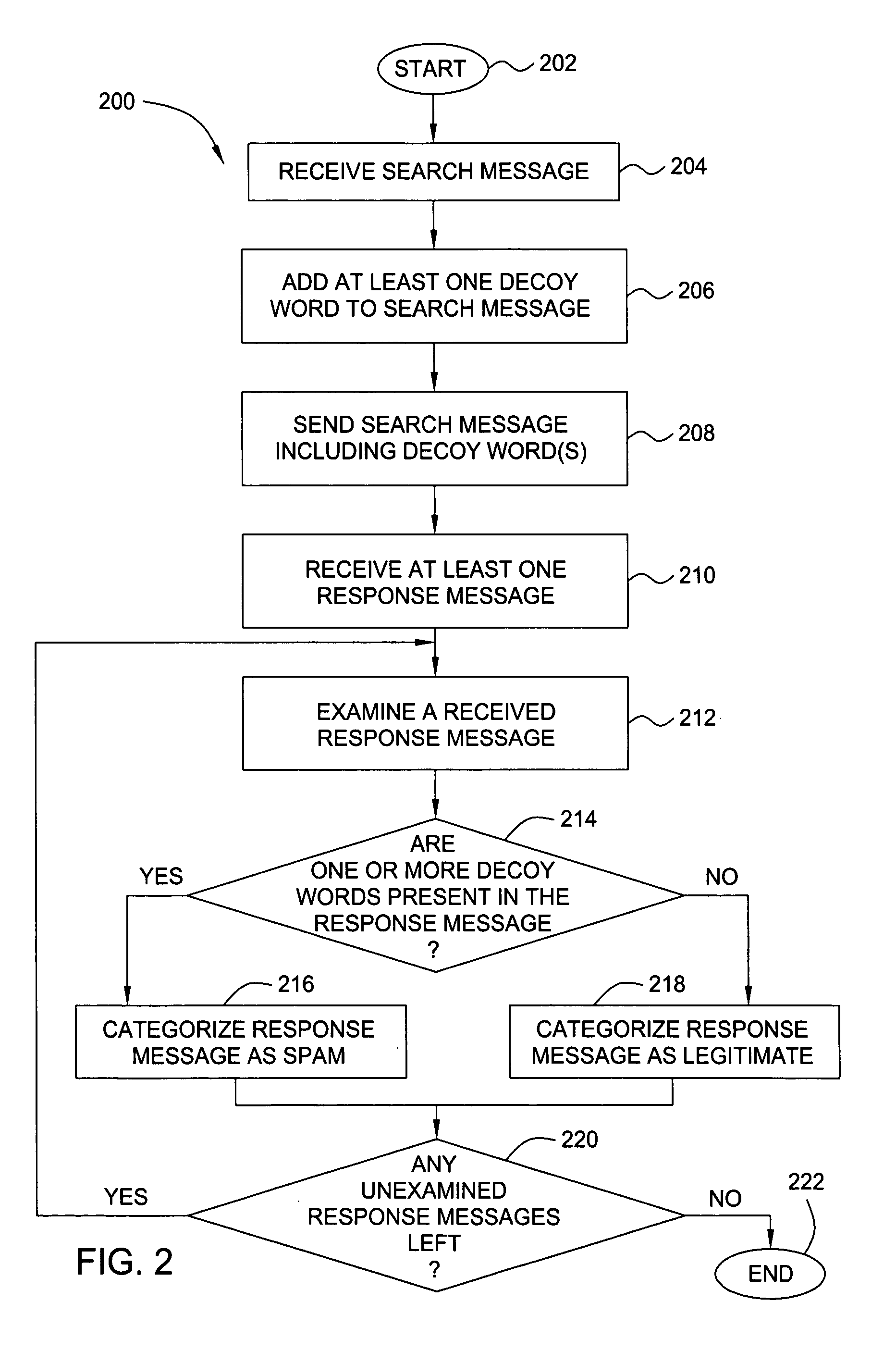Method and apparatus for reducing spam on peer-to-peer networks
a peer-to-peer network and spam technology, applied in the field of computing networks, to achieve the effect of reducing spam in peer-to-peer networks
- Summary
- Abstract
- Description
- Claims
- Application Information
AI Technical Summary
Benefits of technology
Problems solved by technology
Method used
Image
Examples
Embodiment Construction
[0012] In one embodiment, the present invention is a method and apparatus for reducing spam in P2P networks. Embodiments of the present invention make it possible for a user to identify disguised spam sent in response to search messages before downloading the associated data, so that the user does not download and subsequently potentially share the spam with other users. Embodiments of the present invention are especially effective in identifying nodes that send spam in response to substantially any search message that they receive, regardless of the content of the search message.
[0013] For the purposes of the present invention, the term “node” refers to a computing device such as a personal computing device (e.g., a desk top computer, a laptop computer, a cellular telephone, a personal digital assistant, etc.), a server, a router or the like that is connected to a P2P network.
[0014]FIG. 2 is a flow diagram illustrating one embodiment of a method 200 for reducing spam on a P2P net...
PUM
 Login to View More
Login to View More Abstract
Description
Claims
Application Information
 Login to View More
Login to View More - R&D
- Intellectual Property
- Life Sciences
- Materials
- Tech Scout
- Unparalleled Data Quality
- Higher Quality Content
- 60% Fewer Hallucinations
Browse by: Latest US Patents, China's latest patents, Technical Efficacy Thesaurus, Application Domain, Technology Topic, Popular Technical Reports.
© 2025 PatSnap. All rights reserved.Legal|Privacy policy|Modern Slavery Act Transparency Statement|Sitemap|About US| Contact US: help@patsnap.com



